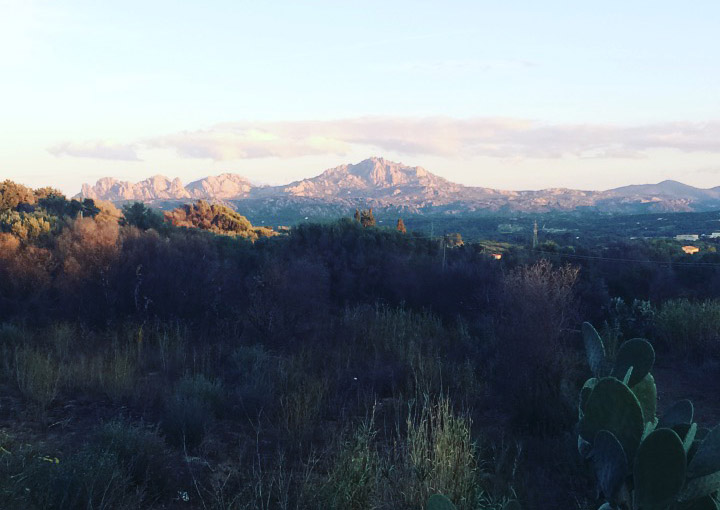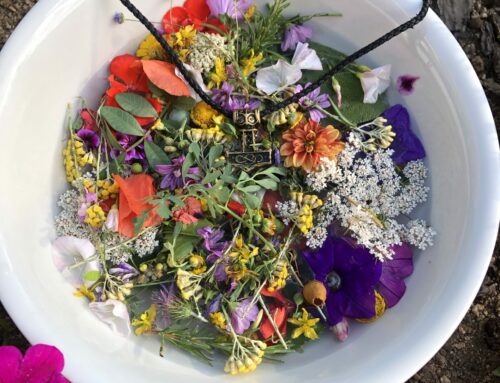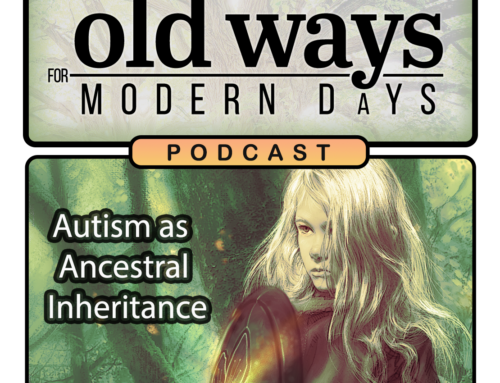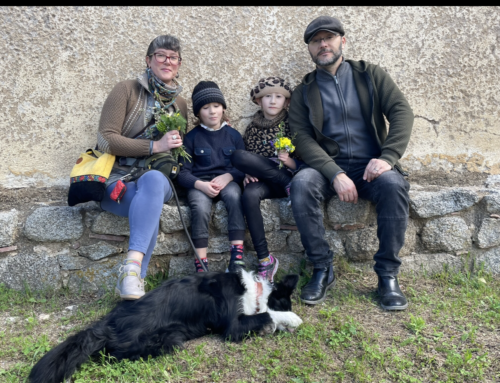
In Sardinia, people tend to live longer than in other parts of the world, and everyone from researchers, to famous actors, want to know why. Likely it’s a combination of factors: diet, environment, and lifestyle; all vital components of a traditional way of life. But let’s try to break it down a little, and clear up some misconceptions along the way.
We all know traditional Italian food is amazing, delicious, fresh, and healthy. We’ve all heard about the health benefits of the Mediterranean Diet. In fact, I wrote a whole article about The Real Mediterranean Diet, clearing up some common illusions there also.
Italy is one of the healthiest countries in the world, home of the Slow Food Movement, and Sardinia is an Italian island that has a long agricultural history steeped in tradition, so it all seems to tie together nicely. Therefore many researchers stop at this point because it’s easy to put this theory in neat packaging this way. But there is one major problem, the Sardinian diet has some variables that don’t fit in with common ideas about the Mediterranean Diet, or the Blue Zones, and their health benefits. Wait, what are Blue Zones?

Blue Zones: The World’s Longest Lived Cultures

Many articles have been written about the Blue Zones; areas around the world where a larger component of the population lives to be over 100 years of age. Sardinia is one of the Blue Zone areas that has been studied and the diet of the Sardinian people has been touted as one of the healthiest in the world, an island which is part of a country which is already among the healthiest. So what is the Sardinian diet, and what makes it so special, and healthy?

Shopping at local markets, and eating in the homes of Sardinians of various ages, I see what local people eat. Markets reflect the demands of local consumers and one can learn a lot about local diets from visiting them. I can tell you it isn’t all fava beans and vegetables, much as some researchers would like you to believe.
The focus of copious “Blue Zones” articles and books have examined the Sardinian diet, and they tout pecorino cheese, goat milk, cannonau wine, whole grains, and fruits and vegetables as the reasons the diet is so healthy, and why the people live longer.
All of these products are indeed wonderful, and certainly a healthy part of the Sardinian diet. However, there are several other important staples of the Sardinian diet absolutely missing from the conversation, ingredients such as honey, mirto, bottarga, pork, shellfish, game meats, and of course the ever-present pasta, to name a few. These products are just as important to the diet and as delicious as the others with their own health benefits. So why are they not on the list?
The Land

I believe there are a few important reasons. One, some of the products aren’t available in the mass market, especially in North America, where many people will try new diets. So in order to make these types of diet plans accessible to more people, you have to feature products that are widely available. This is a major contributing factor to why a lot of diet plans based on the “traditional diets” of healthier populations around the world utterly fail. When you water down the evidence to make it available to more people, it dilutes the entire integrity of the diet.

Artificially creating a diet for the masses also removes the conversation about the actual land where the traditional people live, and how the food is produced there. Different areas of the world have different nutrient makeups in the soil, which relates to the overall nutrients in the final food product. One must also take into account the way food is produced and consumed. Meat from an animal grazing on nutrient-dense grasses has different health implications for the people eating it than an animal who spends its life in a barn eating grain, who rarely sees the light of day. Yet, that shouldn’t discount the fact that certain animal products are staples of the Sardinian diet, theoretically contributing to the good health and longevity of Sardinians overall.

There also continues to be a lot of wild foods, or foods directly from the land still consumed in large amounts in Sardinia – everything from game meats, especially wild boar, to wild herbs, fruits, and vegetables. This means Sardinians partake of food directly from the land without pesticides or other man-made growth stimulants. Sardinians enjoy foraging for wild asparagus, mushrooms, and fennel; not to mention all the wild fruits like figs, grapes, berries, plums, and pears. Mirto, for example, is a traditional Sardinian digestif (which is discussed further down in the article) and is primarily made from wild fruits.
Diet Confusion
In my article Eat Like An Italian: Part 1: No Guilt, I talk about how I was trapped in an unhealthy cycle growing up in American diet culture, and how I was confused about what I needed to eat to be healthy which led to a myriad of problems in my life. However, living in Sardinia has helped me heal from a lifetime of struggle with body image.
Many in the nutrition field, backed up by pharmaceutical companies, large international food corporations, and the medical system want people to be confused about what to eat because it ultimately means more money in their collective pockets.
jenn campus
If you don’t believe people are confused about what to eat, here are some stats from last year:
80% of Americans said they were confused about what they should eat, and 56% said it made them question their food purchases, while 36% followed a specific eating pattern in the past year in the attempt to be more healthy. Americans always look for the magic bullet, and it seems to always begin with dieting, which is why books about Blue Zones and the Mediterranean Diet are so popular in the US.
The last reason some traditional Sardinian foods probably didn’t make the list is that they are not part of the international agenda which promotes plant-based diets as a way to solve all the world’s environmental problems. This vegan agenda is the basis for a lot of the fad diet books out there, and people eat it up even if there are discrepancies within the same book.
Ok, So What Do Sardinians Eat Anyway?

The Two P’s: Pasta and Pork
If you asked Sardinians what their national dish is (and yes, most Sardinians see themselves as separate from their fellow countrymen on “the continent”), they will likely name one of two dishes: Malloreddus or Porceddu.

Malloreddus, also known as “gnocchetti Sardi” is a handmade small pasta traditionally served with a sausage ragu, sometimes made of wild boar. The ridged shell-like shape was traditionally created by pressing the balls of dough on a reed basket, but nowadays most people use a special board with ridges, a citrus zester or even the back of a fork to create the lines, which are important so the sauce can easily cling to the pasta.
Porceddu, or Maialetto as it is sometimes known, is roasted suckling pig, which is prepared by pit-roasting the piglets using myrtle and/or juniper branches. The piglets are cooked around a large open fire pit and it takes about 4-5 hours to create the desired result: tender juicy meat with crispy outside skin, heaven on a plate for pork lovers.
However, strangely, neither pasta nor pork make the list of healthy Sardinian foods in the Blue Zones diet books, despite being very common elements on tables throughout Sardinia. Even if you have been lead to believe these foods are not healthy, we have to agree that neither are obviously posing any health problems for the local Sardinian population. Here is where the discrepancies begin.
Inland Foods

Malloreddus and Porcheddu as the “national foods” exemplify the point that much of the island’s cuisine is based on foods of the land and not of the sea, despite the fact that Sardinia is an island surrounded by the Mediterranean Sea.
The thing is people in the mountainous regions of Sardinia, like Erula, and Ittiri where my parents in law are from, and also the mountain villages of Barbagia where many of the Sardinian centenarians live, and where the Blue Zones research rests heavily, are more likely to eat a more hearty, and earthy (Read: MEAT) diet.

Here’s why:
Sardinia has spent most of its past isolated from the Italian mainland and has a history of invasions, beginning with the Phoenicians in the 9th century (BCE) then the Romans came, followed by Arabs, Northern Italians (Genoese and Pisans), and finally the Spanish. In resistance, the native Sardinian people moved inland creating strong bases of tradition in the interior mountainous regions thereby cultivating a traditional cuisine that relies mostly on inland foods, such as grains, and pastoral animals, like sheep, goats, cows, and pigs, as well as food directly from the land, like wild boars and hares, and game birds like partridge and quail, plus wild plants such as mirto, wild fennel, thyme, rosemary, and corbezzolo.
Preserved Foods

The most common Sardinian ingredient from the sea is Bottarga, a salted, cured fish roe, from either grey mullet or bluefin tuna – a product which is shelf-stable, and easy to store long term, since access to the sea was dangerous for Sardinians during much of Sardinia’s history. This preservation of fresh items allowed the people to live away from the coasts, which only tended to bring ships of invaders.

Throughout Sardinia’s history and continued to the present day these mountain regions are home to those with pastoral vocations, and we all know that shepherds and farmers, especially those living in remote areas, live off the food they produce, which in the case of shepherds are cheese and meat. When it comes to meat, they use the whole animal. Thus their diets are largely made up of what they can grow themselves, and what often arid land can produce. That produce would then need to be preserved, for long term storage.

Therefore, Sardinians eat a lot of cured meats, in addition to aged cheeses. However, this is not unique to the Sardinian diet. Most mainland Italian diets also feature cured meats, and as discussed in my article about misconceptions of the Mediterranean Diet which illustrates that the reality often does not always align with the theories espoused by healthy diet researchers.
The Holy Trinity: Pecorino, Honey, and Saffron

Sardinians use a lot of pecorino (sheep milk cheese), honey, and saffron in their cooking, its like a holy trinity, and all contain a myriad of health benefits. The sheep cheeses are created from pastoral sheep living off local nutrient-rich Sardinian fauna.

Sardinia has the perfect geography for producing honey because there are over 200 species of nectar-producing plants growing wild all over the island, from the mountains to the shore. The healing power of specific honey is directly linked to the healing power of the plants or trees the nectar is collected from. For example, Italian Millefiore (or wildflower) honey has a higher antioxidant composition than other honey.
Honey has been a locally made product since at least Roman times, so it’s a prominent ingredient in the local cuisine. Some beekeepers still use the traditional hives made of cork, also known as “cork skeps.” It is the simplest and most ancient method of producing honey in Sardinia.
The most famous Sardinian honey is called “Miele Amaro” (bitter honey) from Corbezzolo, the “strawberry tree,” named for the small red fruits it produces. It has been used since ancient times, as noted in the writings of Virgil, Ovid, Cicero, and others that refer to it. Wild bees feast on the nectar of these trees, and the trees seem to grow all over the island. The honey is anti-asthmatic, used for bronchial infections, and to improve blood circulation.
It is also known for its antiseptic and anti-inflammatory properties. A joint study by the University of Marche, the University of Vigo, and the University of Granada even detected certain effectiveness in preventing colon cancer. It is also higher in antioxidants than Manuka honey.

Saffron has over 40 therapeutic health uses. Saffron is high in antioxidants and anti-inflammatories. It is also chock full of B-vitamins, magnesium, and potassium.
People today use it to alleviate depression, and quell insomnia, lower insulin and fight obesity. It has also been used for centuries as an expectorant, to counteract aging, and most of all, as an aphrodisiac, making it one of the most ancient but varied use herbs in existence.
All of these uses have been proved by science in the modern age.
In Sardinia, the dough to make malloreddus pasta is often made with saffron, either in the pasta itself or sometimes added to the sauce. It is also commonly used in pastries.
Saffron was likely first brought to the island by the Phoenicians and then cultivated on the island soon thereafter by the Nuraghic people who inhabited the island at the time and are the ancestors of modern Sardinians.

Mirto
Mirto (known in English as Myrtle) is another one of those quintessential wild Sardinian foods. This little wild bush covers the island and its little purple-blue berries full of antioxidants, are used to season food, and to make a specific liqueur, also called Mirto, commonly enjoyed as a digestif. Most Sunday lunches end with a little Mirto, and in every restaurant on the island, from a hole in the wall to upscale will offer a small glass of Mirto after your meal.
The mirto plant has astringent qualities, which give it antifungal and anti-microbial properties. Its leaves and flowers are often drunk as a tea to treat bronchial disorders, like bronchitis and whooping cough, to more serious conditions like tuberculosis.
Recent studies show that specific properties in Mirto are effective against candida and H.pylori making it a gastrointestinal powerhouse.

It Isn’t A Diet, It’s Tradition
What really strikes me when I look at the Blue Zones research especially, is that all of the centenarians featured from various cultures around the world is that they are living in fairly traditional communities. A key component largely missing from the longevity conversation is that diet alone does not explain why people live longer in certain communities. Lifestyle, which includes participating in long-held traditions, keep people going, and these Blue Zones centenarians all come from long-established cultures and communities.
I am passionate about the vital importance of culture and tradition and how they help bring a sense of permanence and belonging in this oft frenzied world. When they interview centenarians from these regions and varied cultures, they are always people who were born and lived their lives in that community. I haven’t found one interview with a person born to and living outside of one of the specific communities who moved there later in life and have now lived to be over 100 years old, but perhaps that research is yet to come, it is too early to tell. I myself am a willing guinea pig in that research.

Sardinians love their traditions, and they have many which are so ancient that some of the earlier meanings to these rituals and sacred places have been forgotten to time. From the beloved dance of the Mamuthones to polyphonic folk singing, and visits to the literally TENS OF THOUSANDS of megalithic, neolithic, and bronze age structures which dot the landscape like old friends: the 5,000-year-old, olive trees, the Nuraghi, dolmans, Tombs of the Giants, and Domus de Janas (“houses of the fairies”), Sardinians have many places and traditions of special spiritual significance which tie them to their mystical island, and the ones that came before them. Not to mention the vibrational energy that these places emit that surely has an effect on the constitution of the human body.

This connection to a place, to the physicality of the land itself and the energy of the land, and the traditions that have sprung from that place is such an important piece of longevity. In traditional societies, people have an inherent sense of belonging to something bigger than themselves. They belong to a place, a community, and a way of life; they have a history, something to keep them rooted, which is a source of comfort, especially as we age. There are also so many things to look forward to, like cultural gatherings, steeped in the history of where they come from, where they can gather with friends and family. But also simple daily pleasures, like coffee with a friend, or watching people go by. Maybe by finishing the day with a little glass of Mirto.
That huge sense of loneliness you hear about in many developed countries is mostly absent here. The community supports its members, and there is a safety net. Sardinians also love Sardinia, her natural beauty, and her spirit. You can never truly feel alone when you have such a connection to the place you live in.
Diet is just one part of a traditional life, and although it is an important aspect, it can’t give us the whole picture of health. I’m sure the Blue Zones and Mediterranean Diets will yield good results if you want to try them, there is a lot of good research there. But often people try diets and are disappointed that the results don’t quite live up to what they expected. That said, I strongly believe that eating your ancestral foods in combination with native and wild foods from the land where you live can help reconnect us to that strong sense of belonging to the places and the people we come from, and the lands we inhabit.
More Articles on this Topic:
- Part 1: Eat Like An Italian: No Guilt (How Sardinia Helped Me Deal With My Unhealthy Relationship With Food)
- Part 2: Eat Like An Italian: The Real Mediterranean Diet
- Traditional Sardinian Food: Malloreddus And Maialetto
- Saffron, Ricotta, And Honey (Sardinia’s Holy Trinity)
- Lasagna Legacy: Italian Food History
- Sardinia, Land of Many Faces
- Why You Should Grow Saffron Crocuses
- Taking A Walk In Our Sardinian Neighborhood







I just wanted to say this article is fantastic and as an italian my family is from just outside of Avelino I had never heard of any part of Italy being 95% plant based i totally agree it is a pushed agenda. I support however people want to eat but let’s stick to what is true. I love your comments on overthinking about what you eat and I do eat dairy of course cheese is a main ingredient in most italian dishes and I only eat local grassfed meat but tried plant based before as well and it didn’t work for me, I think carbs were always a treat for me but after reading this I really want to challenge myself. I hope to move to Italy one day and am working on getting my dual citizenship. Just went to Costa Rica and spend a lot of time in the nicoya península and all the blue zone articles also leave out pork which many folks in the area eat as well. I didn’t see a single dish with squash in it also. Definitely tons of corn and beans undoubtedly, just interesting how folks twist the narrative.
Hi Danielle, thank you so much for your comment. I am glad the article resonated with you. Any piece of writing ever published has an agenda, or a bias, even this one! But I like to encourage folks to decide for themselves based on the varied information they can find on a subject. That’s why for me, I don’t believe in diets because our bodies are all different and therefore need different things to thrive. I personally have a hard time with people outside of a culture misrepresenting it for their own gain. It rubs me wrong that the author of a diet book, no matter what research they did, is confident to make absolute statements about what foods contribute to longevity especially when they leave information out on purpose. This is why I challenge the Blue Zones narrative. There’s a lot in it that is good, but there’s a lot missing and some that is blatant misrepresentation. Thanks again for writing!
Wonderful article, I am delighted that you have shone light on the narrative around blue zones and plant based versions to suit. Well done. I have been on a Keto/low carb lifestyle with an emphasis on animal products. I intend to introduce sheep and goats cheeses, goats milk, kefirs with honey and if I can source it Mirto.
Hi Jack, Thank you so much for your comment. I’m glad you have been inspired to add some delicious foods to your diet. Enjoy!
Thanks Jenn, I got into the Keto low carb thing 6 years because of a health challenge and I am delighted with my results. I am always willing to know more and evolve. The other day I heard a Dr Gundry on YouTube talk enthusiastically about the Sardinian Blue Zone claiming that it is the Mountain people and not those living by the coast who are benefiting. He has published a new book pushing a mostly plant based Keto lifestyle. He claims the goat milk and both the sheep and goats cheeses are critical. He didn’t mention eating the animals and he seems to be skeptical about red meat and even eggs. Can you confirm that eggs and meat are consumed up there in the Mountains of that beautiful Island? I spent a holiday on Sardinia that had a huge impact on my life. I love what you are sharing on here.
Hi Jack, Yes, meat and eggs are both eaten here in the mountains (actually everywhere). Cured meats are very popular, as they are in the rest of Italy, especially a salami called salsiccia sarda, or Sardinian sausage. Another traditional meal here is fire grilled meats. This is more of a “special occasion” meal, but also very popular. Meat in sauce is the norm, and meat is also used to flavor food. Another animal product that is used widely, especially in baking is lard. Most baked goods, which are savory have lard in them, and lard is often found in recipes that are vegetable or legume heavy. Eggs are usually not eaten on their own, but more as a component in foods- sauces, baked goods, etc. but there are a few dishes which feature them. Thanks for letting me know about Dr. Gundry. I will have to look him up!
Jenn, if I can be so bold, might you consider a further post featuring a typical culinary week in the lives of the mountain centenarians.? Not so much what they eat now, at those wonderful ages they are reaching, but maybe more. on what they would have been eating during their middle stages. One imagines they had stable regimes from week to week with obvious adjustments as the seasons came and went. It’s one thing to have influencers like Dr Gundry take what suits them from the BlueZone lifestyles but it’s something else for someone with no particular agenda to share what they find in the actual locations. I have a reasonable network of like minded folks who are keen on finding our way to healthy lifespan without dogmas, but rather with open minds and flexibility. I can share what you come up with and help you in your purpose. Most of us are in Europe too. Whatever your response keep up this wonderful work, Love it. Jack
That is a tall order indeed and, at the moment, far outside the scope of what I could manage as an independent researcher with no budget! This would require a lot of travel through the interior, finding people to speak to, conducting interviews, and then compiling data—no simple thing. If you’re really interested in pursuing this further, I would recommend looking at Sardinian cuisine cookbooks written by Sardinians. Since there are few, those tend to feature the most traditional recipes there are, and being traditional, one can reasonably assume that they go back a long time. Certain foods that remain have been eaten here for thousands of years – like pane carasau, bottarga, and foods from the land. Remember that Sardinians also relied quite a bit on hunting wild game, like rabbits, wild boar, and various game birds. Hunting is still a common activity here. Hope that helps and thank you so much for all your comments and questions!
I loved the article. I am part of the Loma Linda blue zone. Though I don’t live in Loma Linda that community was duplicated in different parts of the country through the sanitarium system by graduates of the Loma Linda Medical Missionary School which later became Loma Linda University.
My grand parents both graduated from the 1st or 2nd class. They settled at Pardise Valley Sanitarium in National City, CA. which later became Paradise Valley Hospital (my dad was head of the Radioloy department until he retired 35 + years.
What I want to point out is that longevity with these Adventist communities is more than diet….it is the working together of principals/ traditions that formed a life style that goes back generations.
They grew all their own food in a large garden..their yard had many types of fruit trees. My grandma made the best quava sauce.
The sanitariums had gardens that all the physician’s and other employees took care of. All the vegetables served to patients came from the gardens.
My grandparents were dedicated naturalists. They studied birds, fossils, collected rocks, minerals, shells, knew all local plants, trees and flowers, spent ti.e in the desert studying the stars by night and desert flora by day.
Spent part of each year with the Navajo in monument Valley and small villages in Mexico…..my grandma providing prenatal and pediatric care and grandpa delivering babies.
I spent many lovely weekends camping with them and other families that belonged to the Polamar Nature Club ….another tradition.
Camp meetings were another tradition that was both social and spiritual. They were looked forward to every summer..some lasting up to 2 weeks of tent meetings by day and campfirs songs and stories in the evening.
Friday Night Vespers was another occasion to come together to sing, pray and socialize.
Sabbath potlucks were always looked forward to as were visiting the tide pools and beach combing for shells Sabbath afternoon. Viewing the desert blooming, looking for arrow heads and fossils was another Sabbath activity.
Pathfinder met once a week. All the kids looked forward to earning badges, studying nature, camping trips, etc.
We all attended Christian school which included many social activities . For example on Saturday night Sam Campbell would come once a year to tell stories and show movies of his animal sanctuary. In the gymn on Saturday night the family could come and watch a Disney movie, play games, a recital, a choir night of funny songs etc.
Vegetarian snacks were always provided.
The school cafeteria only served Vegetarian food 😋
Eight principals were incorporated into a life style …diet was only part of the equation….diet, exercise in the sunlight and fresh air, rest/sleep, temperance, and trust in God.
These principals all worked together in the life style… That one didn’t just happen into.
Today as in some of the other blue zones things have changed that have altered the life style as it was.
Thank you so much!
Thanks so much for this series of articles. I found you after a google search questioning why so-called Mediterranean diets excluded pasta and bread and restricted red meat and dairy (ok, the actual search was shorter terms but that’s what got me here!)
Really enjoyed your descriptions and photos – you make me want to move to Sardinia but I think I will work on connecting more with my ‘place’ here in Brisbane. I wonder Jenn, if the amount of incidental hilly walking also plays a part in the Blue Zone factor in your part of the world?
Thank you so much for your comment! I am glad to hear that you found the information helpful. I had always questioned the same thing, especially living in Sardinia!